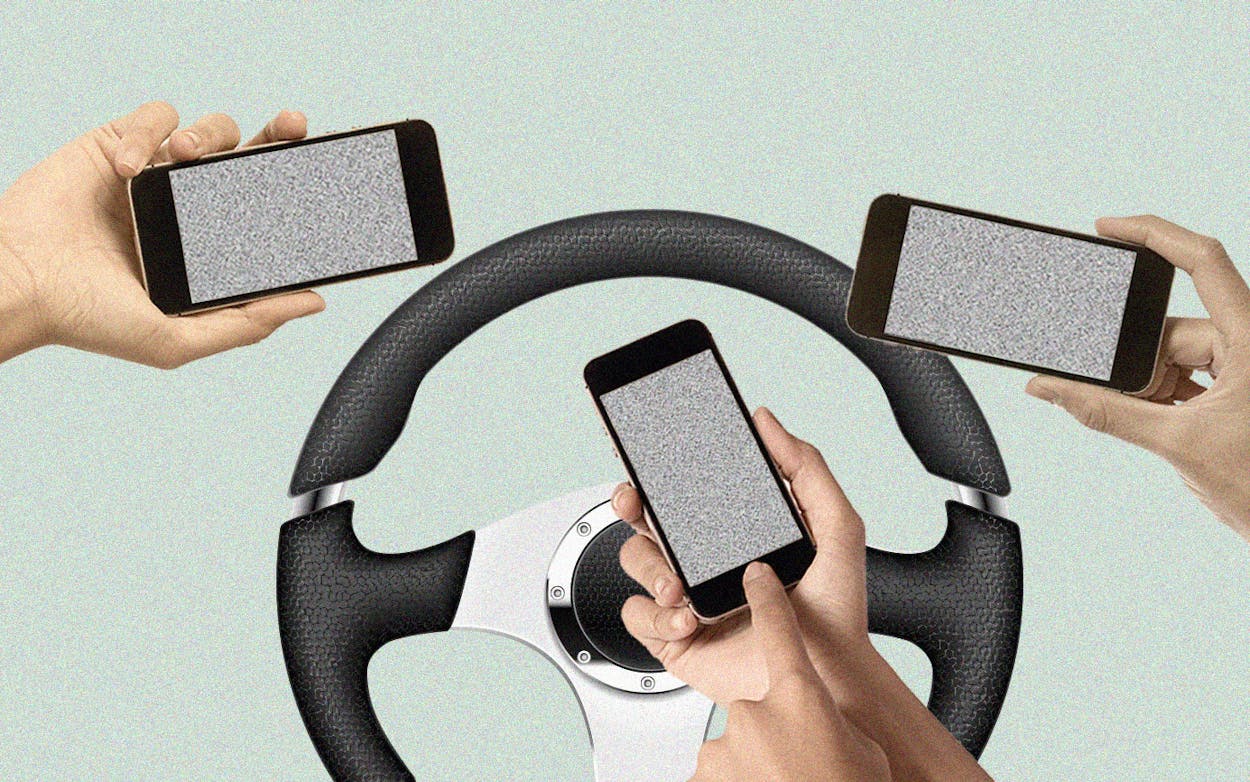Distracted driving is a scourge of our hyperconnected age. The nationwide statistics are shocking: More than 6,000 pedestrians were killed last year by drivers—many of whom, the Governors Highway Safety Administration suggests, were under the influence of a smartphone. The National Safety Council found that distracted driving was the cause of at least 1.6 million traffic collisions that same year. In 2016, the last year for which the National Highway Traffic Safety Administration data is available, 3,450 fatal collisions were directly linked to distracted driving. That last number is likely underestimated. Unlike drunk driving, no tests exist to determine whether a person was using his or her phone at the time of a collision. (Though some states are considering legislation to allow them.)
Perhaps the most shocking statistic is that, despite public awareness campaigns, the rate of distracted driving is rising. According to traffic analytics and data firm ZenDrive, more than 60 percent of drivers use their phones during at least part of their commutes each day, with an average of two minutes of phone use per hour. The heaviest users—representing about 1 in 12 drivers and projected to be 1 in 5 by 2022, if the current growth rate persists—spend nearly one-third of their driving time engaged with their phones.
For Texas, there’s good and bad news in ZenDrive’s study. We score tenth-best among the 50 states in the percentage of time people spend on their phones while driving—a still-not-great 7.23 percent. (In Virginia, the worst offender, it’s nearly 10 percent.) But when the company looked at the data for nineteen U.S. metropolitan regions, Houston and Dallas-Fort Worth drivers were on their phones the most: 9.44 percent and 9.23 percent, respectively. Austin runs in the middle of the pack, with 7.97 percent, worse off than megalopolises like Los Angeles, New York, and Chicago.
It’s especially notable that DFW—home to AT&T, which has its own anti-distracted driving campaign, “It Can Wait”—has so many of its people apparently slavishly picking up their phones. The more connected we become, the more we rely on our phones as a salve for any moment of boredom, the more difficult it is for any PSA to get through to drivers. Laws such as the prohibition against texting while driving that went into effect in Texas in 2017 seem to have little effect on this behavior. Ninety-three percent of participants in the ZenDrive study said they consider themselves “extremely safe” or “pretty safe” while using their phones behind the wheel.
Still, one of the lessons from the “It Can Wait” campaign is that just one moment of distraction can have life-altering consequences. In 2013, AT&T commissioned film director Werner Herzog to make a short documentary about the effects of distracted driving. He highlighted the contrast between the consequences and the insignificance of what people were doing on their phones when they caused collisions. “All the catastrophic accidents when these young people were texting, every single message that was sent while they were driving is utterly trivial, in every single case,” he said at the time.
According to the Texas Department of Transportation, the number of distracted driving accidents statewide in 2018 was more than 95,000. That includes both lower-stakes collisions and truly tragic incidents, but that’s the thing: We don’t get to decide whether someone will be hurt by our negligence.
There’ve been many technological solutions proposed to the problem. iOS and Android phones both have a mode that disables texting and other functions while driving, but users have to opt in to them. Driverless cars, which have their own safety issues, have been considered mere years away from being commonplace for almost a decade now. Meanwhile, the stats indicating how many distracted drivers are out on our roads are terrifying, and getting worse—nowhere more so than in Houston and Dallas.








